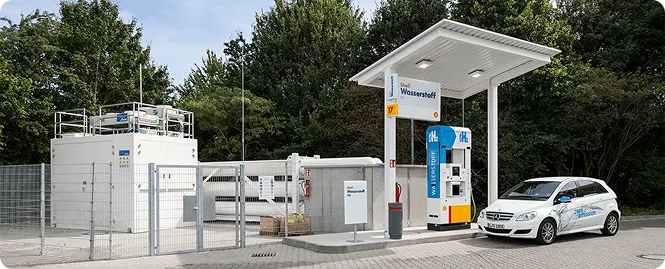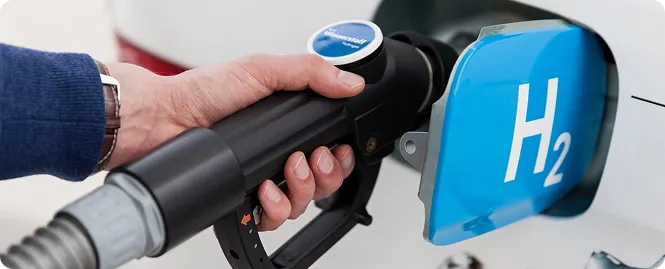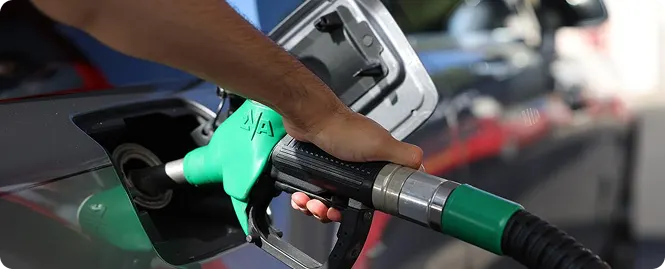How to Open a Gas Station in Illinois
Table of Contents
Key Takeaways
-
Decide between sole proprietorships, LLCs, or corporations to protect your personal assets and streamline operations.
-
Gas station owners should explore business loans, including Small Business Administration (SBA) loans, to cover startup costs and obtain necessary licenses.
-
Conduct a market analysis to find the best location for your gas station, considering traffic flow, competition, and nearby convenience stores.
-
Evaluate the benefits of a gas station franchise, including brand recognition and support, versus owning an independent station with full control.
-
Business owners should focus on promotions, fuel pricing, and customer service to maximize profit margins and grow their gas station business.
Illinois' gas station industry is a lucrative business, which is driven by constant fuel demand, busy highways, and a thriving network of convenience stores. With the right location for your gas station and a solid business structure, gas station owners can tap into steady revenue streams from fuel sales, retail products, and car services. However, success depends on market research, competitive pricing, and smart financial planning to ensure a substantial profit margin and long-term sustainability.
Opening a gas station in Illinois is more than just pumping fuel—it’s about building a profitable business as well. Every step plays a crucial role, from securing funding to choosing between a gas station franchise or independent ownership and handling startup costs. Understanding licensing, permits, and business loan options, like SBA loans, can make or break your venture. A well-informed small business owner can navigate challenges effectively, setting the foundation for a successful gas station business.
Step 1: Researching the Market and Location
Setting up a location can make or break your gas station business. Whether you’re eyeing a bustling city corner or a highway exit, choosing the right real estate holds a lot of importance. Look for high-traffic areas near residential neighborhoods, shopping centers, or major roads— where drivers must stop, refuel, and maybe grab a snack. A strategic location for your gas station means more foot traffic, higher profit margins, and a steady flow of customers.
Before you dive in, make sure you have run a solid market analysis is key. Who's your target audience—commuters, truck drivers, or local residents? Study the traffic patterns of your area to find the busiest hours and peak days. Check out nearby gas station businesses to assess competition and pricing trends. If the area already has five stations within a mile, will yours stand out? Understanding these factors helps you carve out a profitable niche.
Gasoline is just the start. In Illinois, consumers love convenience stores with fresh coffee, quick snacks, and competitive fuel prices. Many prefer stations with loyalty programs or additional services like car washes and air pumps. Knowing what your potential customers value can give your station an edge over the rest.
Step 2: Creating a Business Plan
Crafting a solid business plan can be your roadmap to success. It helps gas station owners stay focused, attract investors, and secure funding, like SBA loans or other business loan options. Whether you’re launching a gas station franchise or an independent station, your plan should outline everything—from startup costs to competitive strategies. A well-crafted plan not only sets clear objectives but also prepares you for potential roadblocks, ensuring your gas station business thrives in Illinois.
A strong business plan should include financial projections, covering startup costs, operating expenses, and expected profit margins. A detailed marketing strategy is essential—how will you attract customers and compete with other gas station businesses? Additionally, outline your business structure, whether your business is a sole proprietorship or LLC, and address operational logistics like fuel supply contracts. Understanding financing options, such as SBA or business loans, can also help secure the capital needed to launch successfully.
A successful gas station business is earned with a growth mindset. To achieve this, you may set clear long-term goals, like expanding services, adding convenience stores, or investing in alternative fuels. Review market trends on a regular basis and adjust pricing strategies to boost profit margins. Whether running a gas station franchise or an independent station, a forward-thinking approach will ensure steady revenue, strong customer retention, and a business that thrives in Illinois' competitive fuel industry.
Step 3: Legal and Regulatory Requirements
Before you open a gas station anywhere, you will need several permits and licenses to operate legally. Register your business with the state, obtain a business license, and apply for a fuel tax permit. Depending on your business structure, you may also need an EIN for tax purposes. Additionally, securing health and safety certifications for your convenience store and any food services ensures compliance with state regulations, protecting both the customers and the gas station owners.
Illinois has strict zoning laws that specify where gas station businesses can be built. Before purchasing real estate, make sure to check the local ordinances to ensure your location is appropriately zoned for fuel sales. You'll also need building permits for construction and approval for underground storage tanks. Compliance with fire codes, accessibility standards, and signage regulations is crucial. Working with local authorities early can help prevent delays and unexpected hurdles in the approval process.
Fuel storage and environmental regulations are a big deal in the gas station industry. You must meet Illinois EPA standards for underground fuel tanks, leak detection systems, and spill prevention. Gas station owners are responsible for proper fuel disposal and ensuring tanks meet safety standards to avoid fines. Additionally, some areas may require pollution liability insurance to cover potential risks. Understanding these environmental laws ensures your gas station business operates safely and avoids costly penalties.
Step 4: Securing Financing
Starting a gas station business requires significant capital, but multiple financing options can help. Many gas station owners secure funding through business loans, which include SBA loans, which offer favorable terms for small business owners. Investors and business partners can also provide financial backing, while some opt for franchise financing if joining a gas station franchise. Exploring personal savings, credit lines, or even crowdfunding can supplement startup costs and get your station up and running.
Before applying for a business loan or pitching to investors, you will need a solid business plan that includes your business’s financial projections, estimated profit margins, and a breakdown of startup costs. Prepare key documents such as tax returns, balance sheets, and cash flow statements. Clearly outline your marketing strategy, operational plans, and expected revenue growth. A well-structured proposal increases your chances of securing funding, whether it's from banks, private lenders, or franchise agreements.
Illinois offers several programs to help small business owners so they can easily fund their ventures. The Small Business Administration (SBA) provides loan programs with low interest rates, while state grants support businesses in certain areas or industries. Additionally, some cities may even offer tax incentives or funding for eco-friendly initiatives such as stations with fuel sources. Researching these opportunities can reduce startup costs and provide financial relief as you build your gas station business.
Step 5: Selecting the Right Equipment and Suppliers
Having the right equipment can be key to successfully opening a gas station. This can include fuel dispensers, underground or above-ground storage tanks, and a reliable point of sale (POS) system for seamless transactions. Safety equipment, like fire suppression systems and leak detection monitors, is also necessary to comply with regulations. Investing in high-quality signage, security cameras, and digital price displays enhances both safety and customer experience, ensuring smooth daily operations for gas station owners.
Securing a reliable fuel supplier is pivotal to keeping your business running. Whether you choose a major oil brand or an independent distributor, negotiating the best fuel supply contract will help produce competitive pricing and consistent deliveries. Consider factors such as wholesale fuel rates, delivery schedules, and branding agreements. A strong partnership and collaborative approach helps maintain steady fuel inventory while maximizing profit margins, making your gas station business more competitive in the Illinois market.
A gas station business thrives on more than just fuel sales. Adding a convenience store that is fully stocked with snacks, drinks, and essentials can significantly boost revenue. Many gas station owners prefer expanding by including additional services like a car wash, auto repair, or even a quick-service restaurant. These options increase customer retention, attract a broader audience, and enhance overall profit margins, making your station a go-to stop rather than just a fuel stop.
Step 6: Building and Designing the Gas Station
Building a gas station business relies on thorough planning to optimize functionality and customer flow. The layout should accommodate multiple fuel pumps, a convenience store, and additional services like a car wash or auto repair. Selecting durable materials for canopies, signage, and pavement ensures longevity. Additionally, incorporating eco-friendly elements such as energy-efficient lighting or alternative fuel stations can set your business apart. A well-designed station enhances efficiency while creating a welcoming space for customers.
Adhering to the set safety standards and building codes is crucial in the gas station industry. Fire suppression systems, proper ventilation, and leak detection measures must be in place to meet environmental compliance requirements. Stations must also follow ADA accessibility laws, ensuring that ramps, wide aisles, and accessible restrooms are available. Zoning laws regulate fuel tank placement and signage, so working with local authorities during construction prevents costly revisions and ensures smooth approval for opening.
An organized, customer-friendly layout can improve sales and enhance the customer experience. Clear signage, wide driving lanes, and easy access to fuel pumps streamline traffic flow. Placement of high-demand items near checkout counters inside the convenience store can also boost impulse purchases. A well-lit, clean, modern design encourages repeat visits, increasing long-term profitability.
Step 7: Hiring and Training Employees
Your gas station business is only as strong as the team running it. From customer service reps greeting patrons at the counter to maintenance staff keeping everything in top shape, hiring the right employees is crucial. Look for reliable, customer-friendly individuals with experience in retail, food service, or fuel operations. A great team enhances efficiency, boosts profit margins, and ensures smooth daily operations. After all, a well-run station thrives with the people behind the pumps.
Hiring is just the beginning—proper training and management helps turn good employees into great ones. Staff should know safety protocols inside and out, from handling fuel spills to operating fire suppression systems. Equally important? First-class customer service. A warm greeting and quick assistance can turn one-time visitors into loyal customers. Training on POS systems, inventory management, and fraud prevention helps prevent losses and keeps everything running smoothly. When employees are prepared, customers notice the difference.
Managing shifts can be a hectic task. Using scheduling software helps ensure proper coverage and prevents burnout. Automated payroll systems streamline payments, tax deductions, and compliance with labor laws. A well-organized team leads to better service, happier employees, and a smoothly running gas station business—keeping both staff and customers satisfied.
Step 8: Marketing and Promotion
Opening a gas station business is exciting, but getting the word out is key. Use local advertising methods like flyers, newspaper ads, and radio spots to generate hype. Eye-catching roadside banners and grand opening discounts can further attract passing drivers. Partnering with nearby convenience stores or auto shops for cross-promotions helps expand your reach. Don’t forget to list your business on Google Maps and local directories—because if customers can’t find you, they can’t fuel up!
A strong social media presence can give your gas station an edge. Platforms like Facebook and Instagram allow you to post and update your customers with special deals, updates, and even fun contests. A loyalty program with fuel discounts or free snacks encourages repeat customers. Limited-time promotions, like discounted gas on opening day, can create a buzz and drive traffic. Word-of-mouth and digital engagement go hand in hand to keep your station on the top.
Team up with local businesses, schools, or community groups to strengthen your presence in the game. Sponsor local events, offer discounts to nearby employees, or host charity drives to show your commitment to the community. These partnerships increase brand recognition and help your gas station become a trusted local stop.
Step 9: Ongoing Operations and Maintenance
Running a gas station business smoothly requires staying on top of day-to-day operations. Keeping the fuel levels stocked, monitoring convenience store inventory, and adjusting fuel pricing based on current market trends are all essential. Implementing an efficient POS system helps track sales and prevent any losses. Competitive pricing strategies—such as monitoring local competitors and offering promotional discounts—can attract more customers. A well-organized approach to inventory and pricing ensures consistent profit margins and steady business growth.
A clean, well-maintained station leaves a lasting impression on the customers and keeps them returning. Regular equipment inspections, fuel pump maintenance, and convenience store upkeep are crucial. Safety is a top priority—train employees on fuel spill protocols, fire prevention, and emergency response. Staying compliant with local regulations, environmental standards, and zoning laws helps avoid fines and legal issues. Prioritizing safety and cleanliness ensures a positive customer experience and reinforces trust in your gas station business.
Great service doesn’t stop at the pump—listening to customer feedback helps improve operations. Encourage customers to share their experiences through reviews and surveys. Address complaints promptly and use suggestions to enhance services, whether it’s adjusting store inventory, improving staff training, or upgrading facilities. A customer-focused approach keeps your business thriving.
Conclusion
Starting a gas station business in Illinois involves selecting the right location, securing permits and licenses, obtaining financing, and managing construction and equipment. Hiring and training employees, implementing marketing strategies, and ensuring smooth daily operations are essential for success. With careful planning, your gas station can become a profitable venture.
Insurance coverage is crucial for protecting your convenience store and gas station from potential risks. Policies like general liability, commercial property, and workers' compensation insurance keep you safe against property damage, lawsuits, and employee injuries. The right business insurance ensures financial security, allowing you to focus on growing your business.










